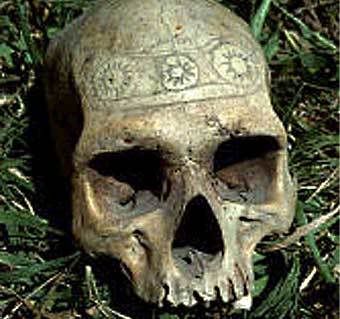deadman_932

Posts: 3094
Joined: May 2006
|
http://www.scielo.org.ar/cgi-bin/wxis.exe/iah/
That link gives access to papers like these:
Ramos, Victor A. (2009) Darwin at Puente del Inca: observations on the formation of the Inca's bridge and mountain building. Rev. Asoc. Geol. Argent., Mar 2009, vol.64, no.1, p.170-179. ISSN 0004-4822
Vizcaíno, Sergio F., Fariña, Richard A. and Fernicola, Juan Carlos (2009) Young Darwin and the ecology and extinction of pleistocene south american fossil mammals. Rev. Asoc. Geol. Argent., Mar 2009, vol.64, no.1, p.160-169. ISSN 0004-4822
Fernicola, Juan Carlos, Vizcaíno, Sergio F. and De Iuliis, Gerardo (2009) The fossil mammals collected by Charles Darwin in South America during his travels on board the HMS Beagle. Rev. Asoc. Geol. Argent., Mar 2009, vol.64, no.1, p.147-159.
Iriondo, Martin and Kröhling, Daniela (2009) From Buenos Aires to Santa Fe: Darwin's observations and modern knowledge. Rev. Asoc. Geol. Argent., Mar 2009, vol.64, no.1, p.109-123.
Martínez, Oscar A., Rabassa, Jorge and Coronato, Andrea (2009) Charles Darwin and the first scientific observations on the patagonian shingle formation (Rodados Patagónicos). Rev. Asoc. Geol. Argent., Mar 2009, vol.64, no.1, p.90-100.
Giambiagi, Laura, Tunik, Maisa, Ramos, Victor A. et al. (2009) The High Andean Cordillera of central Argentina and Chile along the Piuquenes Pass-Cordon del Portillo transect: Darwin's pioneering observations compared with modern geology. Rev. Asoc. Geol. Argent., Mar 2009, vol.64, no.1, p.43-54.
Aguirre-Urreta, Beatriz and Vennari, Verónica (2009) On Darwin's footsteps across the Andes: Tithonian-Neocomian fossil invertebrates from the Piuquenes pass. Rev. Asoc. Geol. Argent., Mar 2009, vol.64, no.1, p.32-42.
AND 11 OTHER QUALITY PAPERS ON DARWIN'S WORK (just click the "texto en inglés" link next to each title)
--------------
AtBC Award for Thoroughness in the Face of Creationism
|


















